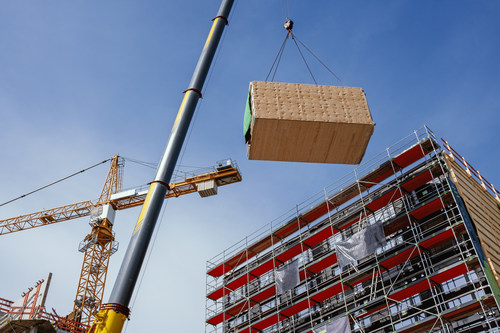
Global modular construction market to see growth as demand for efficient construction methods rises
by CM staff
The global MC market is expected to grow at a compound annual growth rate (CAGR) of 5.5 per cent to $142.06 billion by 2028, up from $103.09 billion in 2022.

Photo: Frost & Sullivan.
SAN ANTONIO — According to Frost & Sullivan’s recent analysis, Global Modular Construction (MC) Growth Opportunities, a shift in awareness toward the use of modular buildings because of the COVID-19 pandemic has unlocked growth opportunities in the MC market globally.
Prefabricated or off-site constructed building units, such as walls, floors, rooms, and frames, are associated with the industry. In response to socioeconomic trends such as the labour shortage, sustainability, and customer demand, MC aims to address the post-pandemic era’s call for more efficient construction methods. As a result, the global MC market is expected to grow at a compound annual growth rate (CAGR) of 5.5 per cent to $142.06 billion by 2028, up from $103.09 billion in 2022.
“Customers’ surging preference for modular buildings in the post-pandemic era has encouraged MC market participants to broaden their manufacturing and assembly design capabilities,” said Melvin Leong, Homes & Buildings Senior Director, Frost & Sullivan. “The move will increase the use of digital solutions to speed up modular building design and approval processes and focus on sustainable manufacturing practices.”
Leong added: “The next two to three years will see the use of MC to build healthcare facilities and schools in rural areas and temporary housing for displaced populations. Therefore, market participants must work with engineers and architects to improve modular building design in response to changing demand for indoor air quality and sustainability.”
To tap into the growth prospects of the expanding MC sector, Frost & Sullivan suggests that market participants should:
- Develop end-to-end capabilities in MC product design, customization, manufacturing, installation, and maintenance.
- Establish partnerships with companies from other industries, enhancing internal processes (for example, design, production, and assembly) that will add value to customers.
- Collaborate with government agencies to improve MC regulations to create uniform standards.
Develop green MC products that promote sustainability and energy efficiency during the building life cycle.